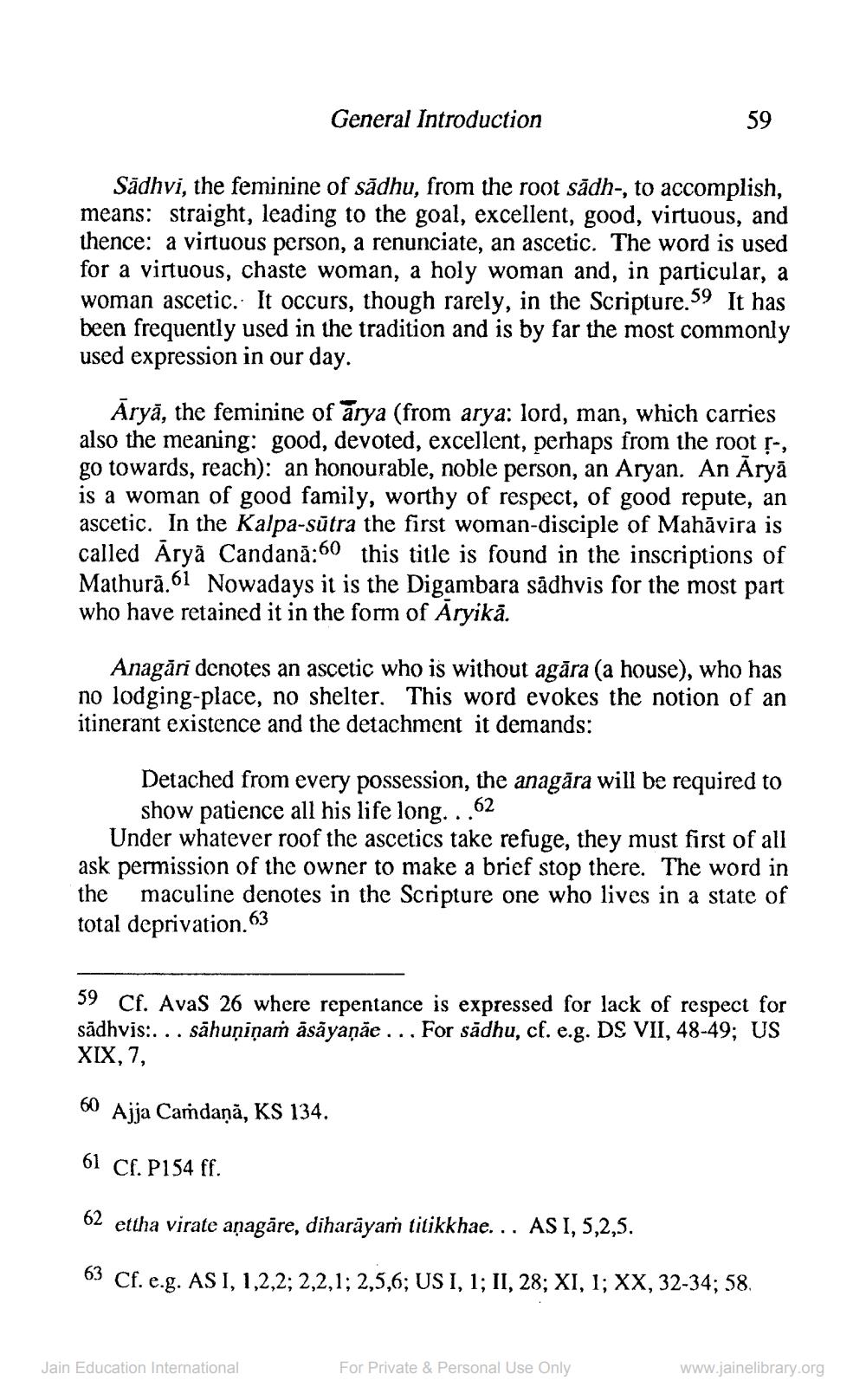________________
General Introduction
59
Sadhvi, the feminine of sadhu, from the root sādh-, to accomplish, means: straight, leading to the goal, excellent, good, virtuous, and thence: a virtuous person, a renunciate, an ascetic. The word is used for a virtuous, chaste woman, a holy woman and, in particular, a woman ascetic. It occurs, though rarely, in the Scripture.59 It has been frequently used in the tradition and is by far the most commonly used expression in our day.
Āryā, the feminine of ārya (from arya: lord, man, which carries also the meaning: good, devoted, excellent, perhaps from the root r-, go towards, reach): an honourable, noble person, an Aryan. An Āryā is a woman of good family, worthy of respect, of good repute, an ascetic. In the Kalpa-sūtra the first woman-disciple of Mahāvira is called Āryā Candanā:60 this title is found in the inscriptions of Mathura.61 Nowadays it is the Digambara sådhvis for the most part who have retained it in the form of Āryikā.
Anagări denotes an ascetic who is without agāra (a house), who has no lodging-place, no shelter. This word evokes the notion of an itinerant existence and the detachment it demands:
Detached from every possession, the anagāra will be required to
show patience all his life long. ..62 Under whatever roof the ascetics take refuge, they must first of all ask permission of the owner to make a brief stop there. The word in the maculine denotes in the Scripture one who lives in a state of total deprivation.63
59 Cf. AvaS 26 where repentance is expressed for lack of respect for sādhvis:... sāhuņiņam āsāyaṇāe ... For sādhu, cf. e.g. DS VII, 48-49; US XIX, 7,
60 Ajja Cardaņā, KS 134.
61 Cf. P154 ff.
62 ettha virate aṇagāre, diharāyam titikkhae... AS I, 5,2,5.
63 Cf. e.g. AS I, 1,2,2; 2,2,1; 2,5,6; US I, 1; II, 28; XI, 1; XX, 32-34; 58.
Jain Education International
For Private & Personal Use Only
www.jainelibrary.org




